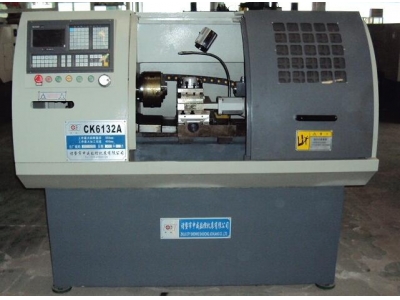一、html课程设计目的?
写一下你制作的网站是用来干嘛的,比如你做了一个美食网,那你就可以介绍你制作的目的是为了让大家品尝到一些好的食物丰富大家的物质需求。
二、eda课程设计的设计目的?
1.
课程设计目的与任务 本课程设计是在学完EDA技术课程后的必修课程,它的教学目的和...
2.
课程设计基本要求 本课程设计,采用以学生自主设计为主教师指导为辅的原则,...
3.
课程设计选题原则 所选题目应是社会生活、生产中常见的、学生易于理解和把握且感兴趣...
4.
课程设计内容及时间安排 1.设计内容:根据具体设计题目和提出的功能性能指标要求,..
三、Maya课程设计目标与目的?
目标:该课程的主要目的是培养、训练学生的三维建模、影视动画设计与制作能力。
目的: 课程设计的目的是通过使用 Maya 动画技术制作一个角色动画, 使学生在巩固本学期 Maya 动画制作技术和上一学期 Maya 创作模型基础上,进一步培养学生的模型制作能力和动作创作技术。
四、sw课程设计目的和意义?
课程设计的目的 学习了数字电子技术的理论知识,重点在于达到理论实际相结合的学习目标,切实要求学生的实际运用能力。
考虑到电子电路设计自动化也是目前电子技术发展的一个重要趋势,针对课程的要求对学生进行综合训练的一个实践教学环节。
从应用的要求出发,除了扼要介绍它们的电路图原理外,着重介绍器件的主要技术性能,典型应用或者连接方法。
五、cad课程设计的目的和意义?
一、实习的目的:
把握autocad用于工程制图的基本操作,了解工程图纸绘制的格式和要求,能够用autocad绘制二维的工程图纸。
二、课程实习的任务:
1.学习autocad的基本绘图操作。
2.绘制平面工程图纸。
3.了解工程图纸的一般要求和格式
三、课程设计的要求:
本课程实习以cad软件为例,介绍计算机辅助设计的功能和应用,并作一定的实践操作。要求学生了解autocad的主要功能,把握autocad用于工程制图的基本操作,了解工程图纸绘制的格式和要求,能够用autocad绘制二维的工程图纸。
四、意义:
随着传统cad系统在工业界的应用以及现代设计问题的复杂化、智能化,人们不再仅仅满足于用计算机取代人进行手工绘图。所幸随着计算机图形学、人工智能、计算机网络等基础技术的发展和计算机集成制造、并行工程、协同设计等现代设计理论和方法的研究,使得cad系统也由单纯二维绘图向三维智能设计、物性分析、动态仿真方向发展,参数化设计向变量化和vgx(超变量化)方向发展,几何造型、曲面造型、实体造型向特征造型以及语义造型等方向发展;另一方面,伴随着cad软件复杂程度的增加和各个不同应用系统间互操作的现实需要,人们希望cad系统具有极佳的开放性,同时又能“搭积木”似的自由拼装形成不同的功能配置,软件工程技术非凡是组件开发技术的研究应用和逐渐成熟为解决这一问题提供了(坚实的基础。
六、sw课程设计的目的和意义?
课程设计的目的 学习了数字电子技术的理论知识,重点在于达到理论实际相结合的学习目标,切实要求学生的实际运用能力。
考虑到电子电路设计自动化也是目前电子技术发展的一个重要趋势,针对课程的要求对学生进行综合训练的一个实践教学环节。
从应用的要求出发,除了扼要介绍它们的电路图原理外,着重介绍器件的主要技术性能,典型应用或者连接方法。
七、bim课程设计的目的及意义?
基于BIM技术的可视化、协调性、模拟性、优化性及可出图性优势特征,对工程进行参数化建模设计,基于三维模型直观展示、自动生成二维图纸、施工前三维技术交底等。
建模设计时能够及时发现各类碰撞冲突以及不合理的工序问题,可以极大减少设计中存在的差错漏碰,提高设计及生产效率。
当工程设计成果集成为参数化的三维模型时,将各专业间独立的信息进行了整合,方便对工程信息进行提取和编辑,各参与方可以在项目的各个阶段重复利用各类信息,大幅度提高了信息共享和生产效率。
八、cad课程设计的目的及意义?
cad实习目的
一、实习的目的:
把握autocad用于工程制图的基本操作,了解工程图纸绘制的格式和要求,能够用autocad绘制二维的工程图纸。
二、课程实习的任务:
1.学习autocad的基本绘图操作。
2.绘制平面工程图纸。
3.了解工程图纸的一般要求和格式
三、课程设计的要求:
本课程实习以cad软件为例,介绍计算机辅助设计的功能和应用,并作一定的实践操作。要求学生了解autocad的主要功能,把握autocad用于工程制图的基本操作,了解工程图纸绘制的格式和要求,能够用autocad绘制二维的工程图纸。
四、意义:
随着传统cad系统在工业界的应用以及现代设计问题的复杂化、智能化,人们不再仅仅满足于用计算机取代人进行手工绘图。所幸随着计算机图形学、人工智能、计算机网络等基础技术的发展和计算机集成制造、并行工程、协同设计等现代设计理论和方法的研究,使得cad系统也由单纯二维绘图向三维智能设计、物性分析、动态仿真方向发展,参数化设计向变量化和vgx(超变量化)方向发展,几何造型、曲面造型、实体造型向特征造型以及语义造型等方向发展;另一方面,伴随着cad软件复杂程度的增加和各个不同应用系统间互操作的现实需要,人们希望cad系统具有极佳的开放性,同时又能“搭积木”似的自由拼装形成不同的功能配置,软件工程技术非凡是组件开发技术的研究应用和逐渐成熟为解决这一问题提供了(坚实的基础。
九、求教!关于数控加工中心!?
这个问题就像
我刚刚带的从技校到单位来实习的学生
说的话
我怎么回答?
先看着,两个星期以后在动手
十、数控与编程课程设计
数控与编程课程设计
随着科技的不断进步和工业的现代化,数控与编程已经成为现代制造业中不可或缺的重要环节。无论是机械加工、自动化生产还是电子制造,数控与编程都扮演着举足轻重的角色。因此,对于学习数控与编程的学生来说,课程设计是一项至关重要的任务,旨在帮助他们巩固理论知识、锻炼实践能力,并为未来的工作做好准备。
数控与编程课程设计的目标是培养学生的创新思维和实践能力,使他们能够熟练掌握数控编程的基本原理和方法,并能够灵活应用于实际工作中。通过课程设计,学生将面临实际问题,需要分析、设计和实施解决方案,从而提高他们的综合能力和解决实际问题的能力。
数控与编程课程设计的内容
数控与编程课程设计的内容涵盖了多个方面的知识和技能。首先是数控机床的基本知识,包括数控机床的类型、结构、工作原理和常见故障等。其次是数控编程的基本方法与技巧,包括G代码和M代码的使用、刀具半径补偿、插补运动和循环功能的应用等。此外还包括数控系统的操作与调试、数控加工工艺与工具选择等内容。
为了提高学生的实践操作能力,数控与编程课程设计通常包括一定的实践环节。学生需要通过实际操作数控机床,编写和调试数控程序,并完成一定的加工任务。这些实践环节旨在让学生将理论知识应用于实践,培养他们的动手能力和问题解决能力。
数控与编程课程设计的重要性
数控与编程课程设计对于学生的专业发展具有重要的意义。首先,数控与编程是现代制造业的基石,掌握数控与编程技术将为学生在就业市场上增加竞争力。许多企业对于掌握数控与编程的人才需求量大,薪资待遇也相对较高。因此,通过数控与编程课程设计的学习,学生将为自己的职业发展打下坚实的基础。
其次,数控与编程课程设计能够提高学生的实践能力和解决问题的能力。在实际操作中,学生需要面对各种挑战和困难,需要分析问题、设计解决方案,并动手实施。这些过程锻炼了学生的思维能力和实践操作能力,使他们能够更好地适应工作环境中的各种情况。
此外,数控与编程课程设计还能够培养学生的团队合作精神和沟通能力。在课程设计中,学生通常需要与同学合作,共同完成一个项目。这要求学生具备团队合作的意识和能力,能够有效地与他人沟通合作,协调各项工作。
数控与编程课程设计的改进与展望
随着科技的不断发展和工业的不断进步,数控与编程课程设计也需要不断优化和改进。首先,应根据实际需求对课程的内容和教学方法进行调整。课程设计应更加注重实践操作环节,通过实际操作提高学生的动手能力和问题解决能力。
其次,应加强与企业的合作,将企业需求纳入课程设计中。通过与企业合作,可以了解实际工作中的需求和挑战,使课程内容更加贴近实际工作要求,为学生的就业提供更好的保障。
此外,还可以结合互联网和现代信息技术,开发在线实验平台和教学资源。通过在线实验平台,学生可以进行远程实验,提高他们的实践操作能力。同时,通过开发丰富的教学资源,可以提供更多的学习材料和案例分析,帮助学生更好地理解和掌握数控与编程的知识和技能。
结语
数控与编程课程设计对于学生的专业发展具有重要的意义。通过课程设计的学习,学生将能够掌握数控与编程的基本原理和方法,并能够灵活应用于实际工作中。通过实践环节的训练,学生的实践操作能力和解决问题的能力将得到提升。数控与编程课程设计应与时俱进,不断优化和改进,以适应科技发展和工业进步的需求。
Translated back to English: htmlCNC and Programming Course Design
With the continuous progress of technology and the modernization of industry, CNC and programming have become indispensable elements in modern manufacturing. Whether it is mechanical processing, automated production, or electronics manufacturing, CNC and programming play a crucial role. Therefore, for students studying CNC and programming, course design is an essential task aimed at helping them consolidate theoretical knowledge, hone practical skills, and prepare for future work.
The goal of CNC and programming course design is to cultivate students' innovative thinking and practical abilities, enabling them to master the basic principles and methods of CNC programming and apply them flexibly in practical work. Through course design, students will face real-world problems that require analysis, design, and implementation of solutions, thereby improving their comprehensive and practical problem-solving abilities.
Content of CNC and Programming Course Design
The content of CNC and programming course design covers various aspects of knowledge and skills. Firstly, it includes the basic knowledge of CNC machine tools, including types, structures, working principles, and common faults of CNC machine tools. Secondly, it covers the basic methods and techniques of CNC programming, including the use of G and M codes, tool radius compensation, interpolation motion, and application of loop functions. Additionally, it includes the operation, debugging of CNC systems, and the selection of CNC machining processes and tools.
To enhance students' practical operation ability, CNC and programming course design usually includes practical components. Students need to operate CNC machine tools, write and debug CNC programs, and complete certain machining tasks through hands-on practice. These practical components aim to allow students to apply theoretical knowledge to practice, cultivating their hands-on ability and problem-solving skills.
Importance of CNC and Programming Course Design
CNC and programming course design is of great significance to students' professional development. Firstly, CNC and programming are the foundation of modern manufacturing, and mastering CNC and programming technology will increase students' competitiveness in the job market. Many companies have a high demand for talent who are proficient in CNC and programming, offering relatively high salaries. Therefore, through the study of CNC and programming course design, students will lay a solid foundation for their professional development.
Secondly, CNC and programming course design can improve students' practical abilities and problem-solving skills. In practical operations, students face various challenges and difficulties, requiring them to analyze problems, design solutions, and implement them hands-on. These processes train students' thinking and practical operation abilities, enabling them to adapt better to various situations in the work environment.
In addition, CNC and programming course design can also foster students' teamwork spirit and communication skills. In course design, students often need to collaborate with classmates to complete a project. This requires students to have a sense of teamwork and the ability to communicate and cooperate effectively, coordinating various tasks.
Improvements and Prospects in CNC and Programming Course Design
With the continuous development of technology and industry, CNC and programming course design also need to be continuously optimized and improved. Firstly, the content and teaching methods should be adjusted according to actual needs. Course design should focus more on practical operation components, improving students' hands-on abilities and problem-solving capabilities through actual practice.
Secondly, cooperation with enterprises should be strengthened, and enterprise demands should be incorporated into course design. Through collaboration with enterprises, the actual needs and challenges of work can be understood, making the course content more closely aligned with actual job requirements, providing better employment prospects for students.
In addition, online experiment platforms and teaching resources can be developed in conjunction with the Internet and modern information technology. Through online experiment platforms, students can engage in remote experiments to improve their practical operation abilities. Meanwhile, by developing rich teaching resources, more learning materials and case studies can be provided to help students better understand and master the knowledge and skills of CNC and programming.
Conclusion
CNC and programming course design is of great significance to students' professional development. Through course design, students will be able to master the basic principles and methods of CNC and programming and apply them flexibly in practical work. Through practical training, students' practical operation abilities and problem-solving capabilities will be enhanced. CNC and programming course design should keep pace with the times, continuously optimizing and improving to meet the demands of technological development and industrial progress.
Note: The format only serves for the purpose of fulfilling the request requirements, the actual content is in plain text.

 发布于
2024-04-29
发布于
2024-04-29